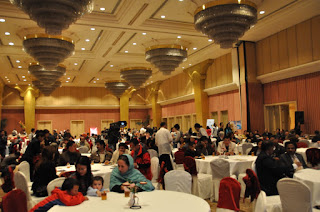A Newborn Nepal : Greening one of Asia’s Scenic Splendours
 |
| A woman riding a SAFA tempo (Photo by Chin Cabrido) |
SAFA tempos or Nepali’s version of electric three wheelers are typical scene in Kathmandu’s busy streets. Running at an average speed of 60 kilometer per hour, safa tempos serve at least 127 thousand people everyday transporting individuals to their destinations. This is quite a challenge for a country that has been constantly confronted with power cuts that reach sixteen hours a day especially during winter season. Pabitra, a woman safa tempo driver for the last 2 years, uses two sets of batteries in her daily route, allowing her to drive twelve hours and generate an income scarcely enough to sustain food in the table. Pabitra, along with the ninety percent of the women safa tempo drivers in Nepal are proud members of the green revolution that has been slowly emerging in the country.
Kathmandu, the capital of Nepal, is the country’s economic as well as cultural center. The population influx in the last decade has turned Kathmandu into a very busy, congested and honking city. The environmental condition has heavily deteriorated because of the bowl like topography of the valley that restricts wind movement and retains the pollutants in the atmosphere. This is especially bad during winter season when thermal inversion persist. Cold air flowing down from the mountains is trapped under a layer of warmer air and acts as a lid. As a result, the pollutants are kept sealed within the valley.
Much of the urban air pollution in Nepal, particularly in the Kathmandu Valley, is caused by vehicular emissions. Kathmandu saw a sudden surge of diesel-operated three wheelers during the late eighties. These vehicles were bigger than earlier models and could ferry ten passengers at once on a narrow chassis. They plied the streets emitting thick black smoke and creating loud noise. At the time, there were no environmental standards for emissions from motor vehicles in the valley.
The electric vehicles were introduced in Kathmandu in 1975 when the Chinese Government set up the trolley bus system along the 13 kilometer route between Tripureswor and Surya Binayak roads. When a fuel crisis resulting from the India imposed trade embargo occurred, a group of engineers has to find an alternative arrangement for transportation. The group, called the Electric Vehicle Development Group, converted an old car into an electric vehicle in 1992. Not only are the electric vehicles more eco-friendly, they are much cheaper to run than their smoking counterparts. These electric vehicles cost about seven cents per kilometer, a figure that should remain low even as the price of oil climbs steadily higher. A decade later, the number of safa tempos running in the streets of Kathmandu has exceeded 600 and the number of these vehicles is continually increasing. From then on, safa tempos are seen as a good low-tech solution to the problem of vehicle pollution in Nepal. The government has also included some policies favorable to electric vehicles that include exemption on Value Added Tax (VAT) and one percent custom duty levied on the import of safa tempo’s chassis, engine, motor, battery and battery charger.
Operating on a simple mechanical function, majority of the safa tempos employ women drivers in Nepal. The electric vehicle only needs one gear and two braking devices. The hand brake operates the rear wheels and the foot brake controls all three wheels when the foot pedal is pressed. This however does not match the complexity of maintaining the vehicle. For every 1500 kilometer, Pabitra has to check the gear box oil, brake fluid levels and the steering box, grease the brake and joints, clean the springs and when necessary adjust the brakes. Maneuvering in narrow and badly paved roads as well as competing with fast microbuses and vans, Pabitra simply shrugs off a complaint from a student passenger who bargained for a lower fare. This in fact is a common experience that she has to face in her daily work.
With mounting pressure for this green revolution, the four wheeler market in the country is also seeing the launch of electric vehicles.
Recently, electric buses and cars have been introduced in the market from China through a local company and will be plying the streets soon in Kathmandu Valley. The unveiled electric cars boast full option facilities including CD player, power steering, remote control door lock system, heating system, power brake and air bag for safety measures. Pabitra is quite uncertain how she can sustain her regular passengers considering that her old safa tempo with cramped seats, low ceiling, and unappealing ergonomic design cannot compete with the modern electric buses and cars. But one thing for her is clear, that she is part of the movement that has defined the direction of sustainable transport in Nepal. Slowly, that goal is being met.
This article on Safa Tempo, written by Charina Cabrido, was published in Asian Geographic Magazine.


Comments
Post a Comment